On 3 and 4 July 2025, the KulturGutRetter project presented equipment specially developed for the ‘Cultural Heritage Response Unit’ (CHRU) to European partners at the THW logistics centre in Hilden. This equipment is intended for the emergency supply of cultural assets after disasters.
In the future, the ‘Cultural Heritage Response Unit’s’ (CHRU) special equipment for missions abroad will be stored in the Federal Agency for Technical Relief’s (THW) logistics centre in Hilden. As well as components for setting up a self-sufficient Base of Operations (BoO) — a temporary logistical and operational base for the unit at the deployment location — it will primarily consist of specialised tools and materials for documenting and providing rapid emergency care to damaged or threatened cultural assets in an emergency. This means that the CHRU will soon be able to support the emergency response of museums, monuments, collections, and archives worldwide as part of Germany’s contribution to international disaster relief.
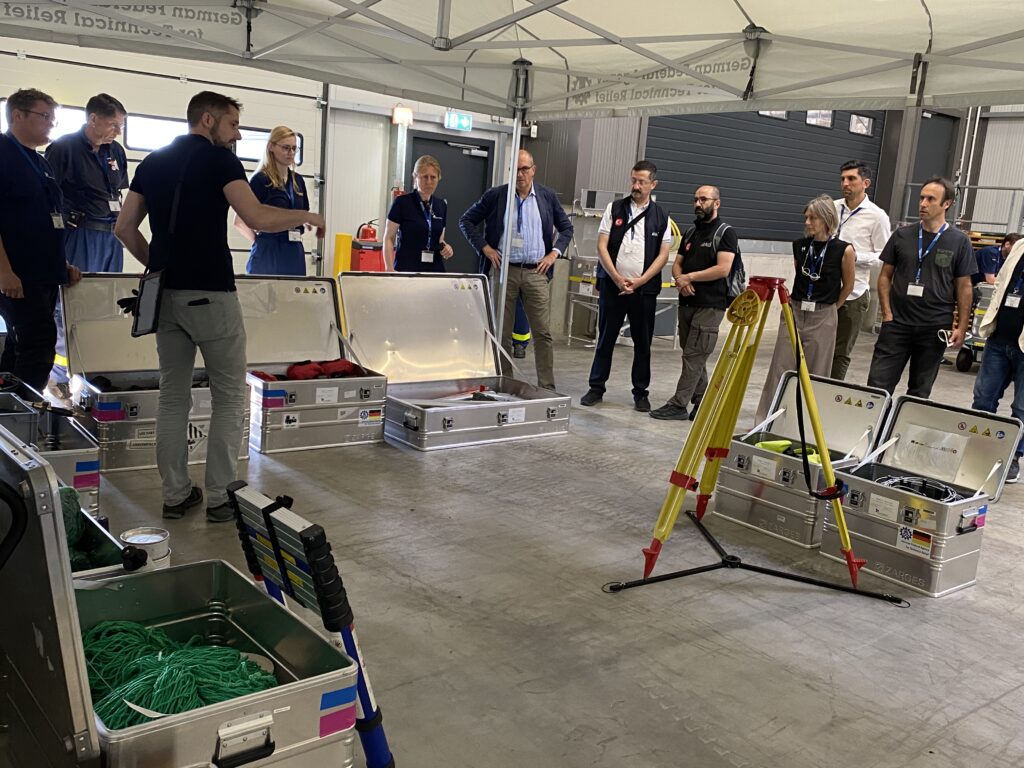
Presentation of the equipment for the initial safeguarding and stabilisation of immovable cultural assets to the EU partners. Photo: Constance Domenech, DAI.
A study visit for the European partners
At the beginning of July, representatives from Italy, France, Türkiye, and Portugal travelled to Hilden to learn about the equipment and have a closer look at it. The event is part of a collaboration between civil protection and cultural heritage experts from beyond European borders. It took place as part of the EU-cofinanced PROCULTHER-NET2 project, which aims to integrate cultural heritage into the European Civil Protection Mechanism (UCPM) and develop common European standards.
The German Archaeological Institute (DAI) and the THW are joint partners in this EU-financed project, making Germany one of the few countries to combine disaster and cultural heritage protection. ‘The insights we gained over the past few days were valuable because we were shown approaches and equipment that are truly unique in Europe. The CHRU is very much in the spirit of PROCULTHER-NET2. The European partners were particularly interested as they would like to implement something similar in their own countries. We were impressed by how well the experts from the cultural heritage and civil protection sectors worked together — their team spirit was palpable,” said Nadia Francaviglia, Assistant Project Manager of PROCULTHER-NET2.
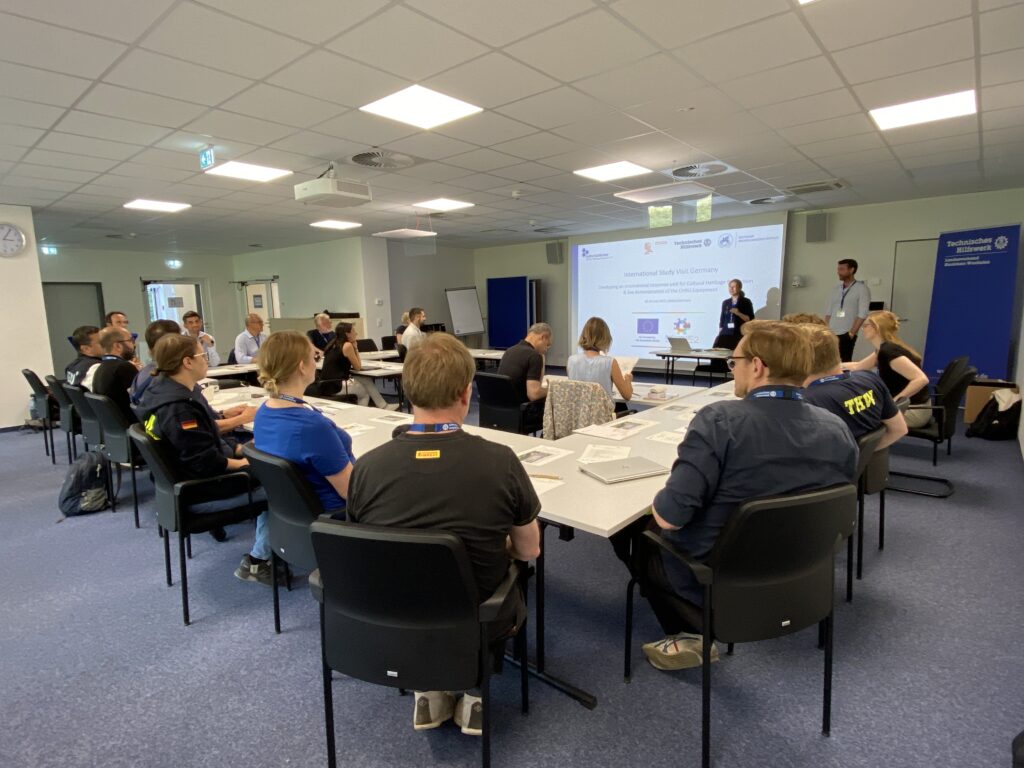
Presentation of the latest developments in the KulturGutRetter project. Photo: Constance Domenech, DAI
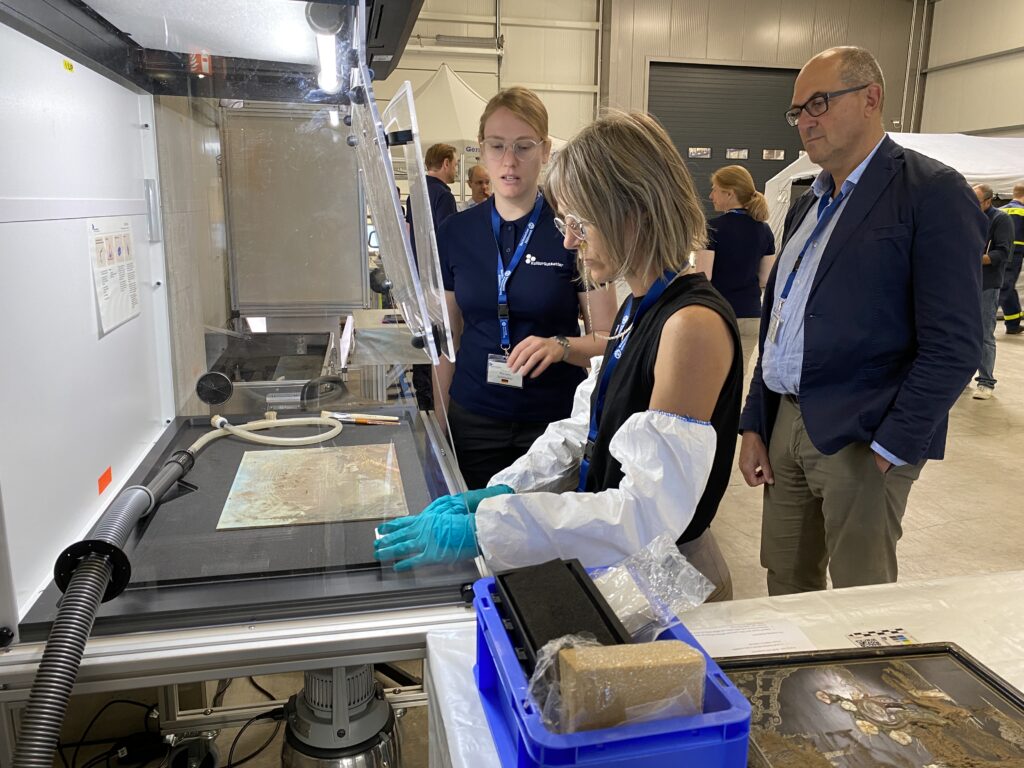
EU partners test the dry-cleaning module of the mobile laboratory. Photo: Constance Domenech, DAI.
Equipment for cultural conservation
The components reflect the expertise of the three project partners involved in the project and its deployment: DAI, THW and LEIZA (Leibniz Centre for Archaeology). Accordingly, the equipment consists of:
– Logistics components: Base of Operations (i.e. infrastructure for the self-sufficient accommodation of the CHRU at the site), including power supply, sanitary facilities, accommodation, IT and communication structures, etc.
– Specialised equipment for the emergency care of built heritage, including surveying equipment for digital 2D and 3D documentation; tools and materials for professional cleaning, decontamination, securing, stabilisation, and emergency conservation; and, if necessary, dismantling and salvaging of damaged building components and furnishings.
– Specialised equipment for the emergency care of movable cultural assets is primarily in the form of a mobile emergency conservation laboratory. This consists of modules that can be quickly assembled and dismantled for serial registration, wet and dry cleaning, and documentation of collection and archive items.
– Hardware and software for fully digital emergency documentation, in which the affected cultural assets are recorded and damage is assessed, as well as emergency measures.
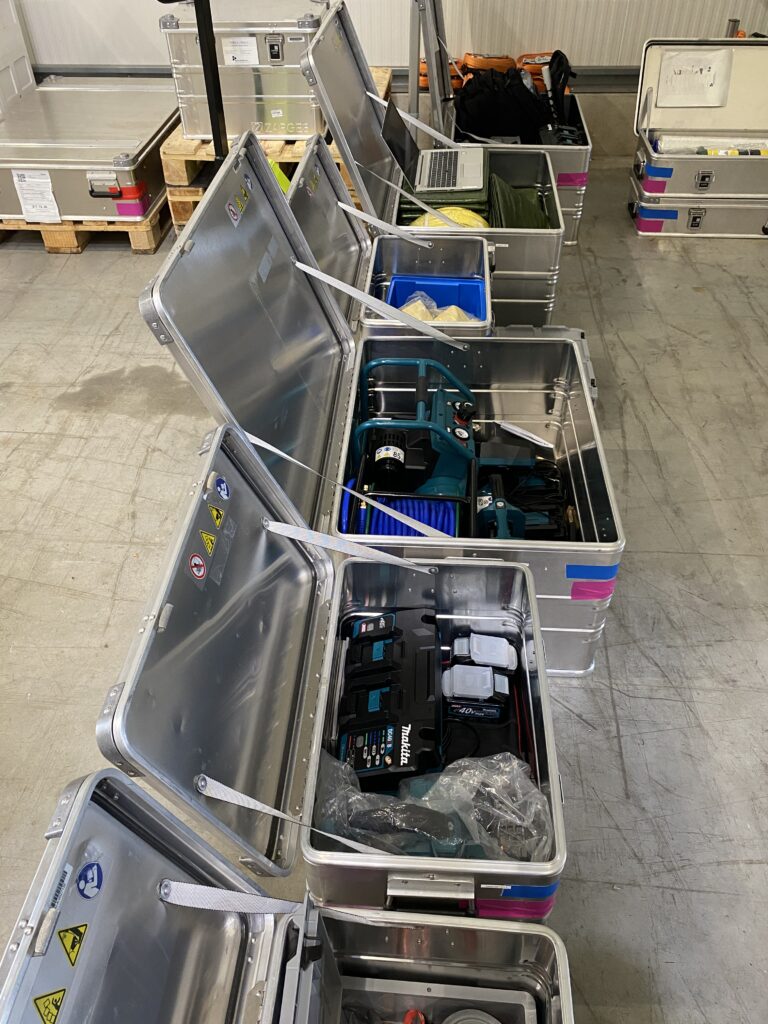

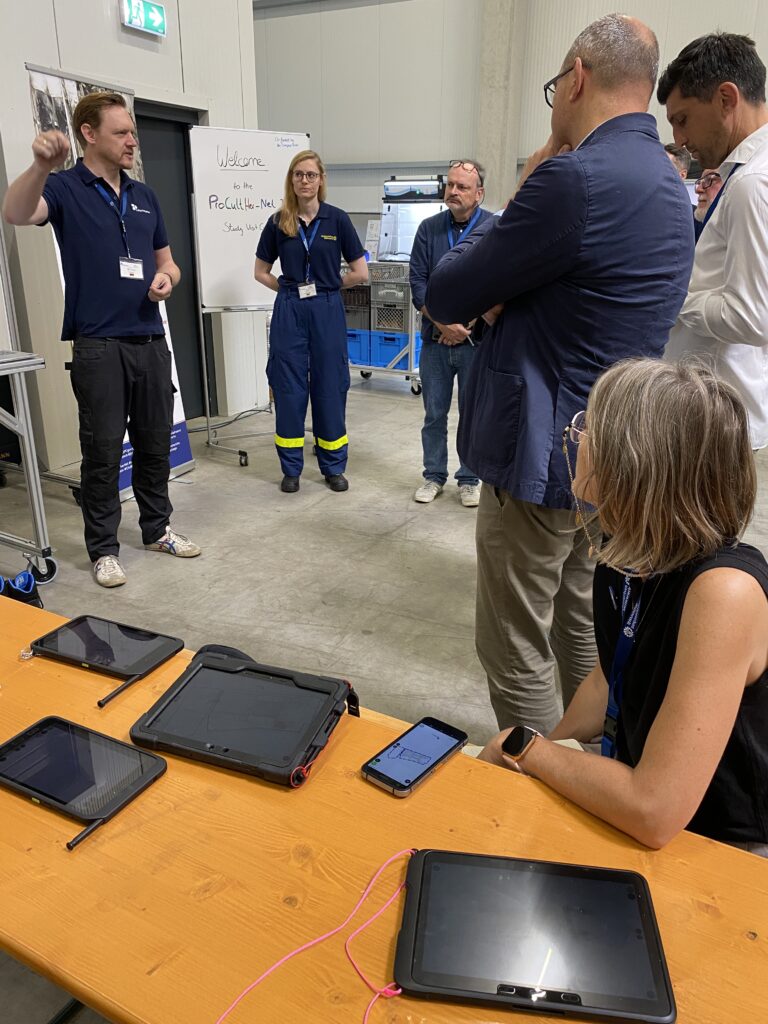
CHRU equipment for immovable cultural heritage, movable cultural heritage and IT. Photos: Constance Domenech, DAI
